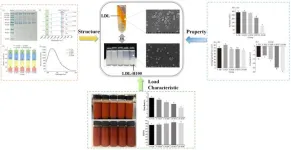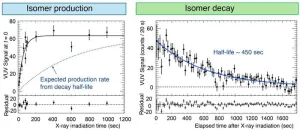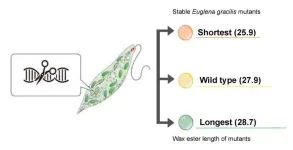(Press-News.org) Trastuzumab deruxtecan shows substantial anti-cancer activity in brain metastases in patients with HER2-positive breast cancer in major international clinical trial
Results confirm findings of previous, smaller studies
BARCELONA, Spain - A drug that delivers chemotherapy directly to tumors has shown impressive activity against some of the hardest-to-reach cancer cells: those that have spread to the brain in patients with advanced HER2-positive breast cancer. The findings, from an international clinical trial led by Dana-Farber Cancer Institute researchers, reinforce earlier findings of the benefits of the drug – trastuzumab deruxtecan (T-DXd), an antibody-drug conjugate – in these patients, trial leaders say.
The results of the trial, dubbed the DESTINY-Breast12 study, were presented today at the European Society of Medical Oncology (ESMO) Congress 2024 in Barcelona, Spain, and published simultaneously in a paper in the journal Nature Medicine.
The findings point to T-DXd as a valuable new treatment option for patients with a particularly challenging form of cancer, researchers say. "As many as half of patients with HER2-positive breast cancer develop brain metastases, which often has a poorer prognosis than breast cancer that hasn't spread to the brain," says Nancy Lin, MD, leader of the trial and senior author of the study in Nature Medicine. Lin is the associate chief of the Division of Breast Oncology, Dana-Farber, Susan F. Smith Center for Women’s Cancers, and the director of the Metastatic Breast Cancer Program. Localized therapies such as surgery, radiosurgery, and radiation therapy to the brain, are used to treat brain metastases, but the disease usually progresses in the central nervous system – the brain and spinal cord – within six to 12 months of treatment.
Trastuzumab deruxtecan consists of the drug deruxtecan – a chemotherapy agent – linked to an antibody that targets the HER2 protein on breast cancer cells. Trastuzumab itself is a mainstay treatment of HER2-positive breast cancer that has spread to other parts of the body, including the brain. But as with treatments directed specifically at the brain, patients receiving trastuzumab usually have their disease progress, often in the central nervous system.
"Additional systemic therapies for patients with brain metastases are urgently needed," Lin remarks.
The DESTINY-Breast12 trial involved 504 patients with HER-2 positive breast cancer treated at 78 cancer centers in Western Europe, Japan, Australia, and the U.S. Two hundred sixty-three participants had active or stable brain metastases and 241 had no brain metastases. All had received at least one therapy before enrolling in the trial.
After a median follow-up of 15.4 months, progression-free survival of participants with brain metastases – the length of time patients lived with the cancer before it worsened – was a median of 17.3 months, investigators found. 12- month progression-free survival was 61.6%. Seventy-one percent of participants had an intracranial objective response – a measurable decrease of their cancer in the central nervous system. As expected, there was also a high rate of response in tumors outside of the central nervous system in patients with or without brain metastases. Ninety percent of patients in both groups were alive a year after beginning T-DXd treatment.
The side effects associated with T-DXd were consistent with those reported in previous studies and included nausea, constipation, neutropenia (low levels of a type of white blood cells), fatigue, and anemia. Interstitial lung disease (ILD), a known risk of T-DXd, was observed at similar rates to prior studies, and vigilance to this potentially fatal side effect remains critical.
"Our data show that T-DXd has substantial and durable activity within the brain in patients with HER2-positive breast cancer that has metastasized there," Lin says. "These results support the use of the drug going forward in this patient population."
About Dana-Farber Cancer Institute
Dana-Farber Cancer Institute is one of the world’s leading centers of cancer research and treatment. Dana-Farber’s mission is to reduce the burden of cancer through scientific inquiry, clinical care, education, community engagement, and advocacy. We provide the latest treatments in cancer for adults through Dana-Farber Brigham Cancer Center and for children through Dana-Farber/Boston Children’s Cancer and Blood Disorders Center. Dana-Farber is the only hospital nationwide with a top 10 U.S. News & World Report Best Cancer Hospital ranking in both adult and pediatric care.
As a global leader in oncology, Dana-Farber is dedicated to a unique and equal balance between cancer research and care, translating the results of discovery into new treatments for patients locally and around the world, offering more than 1,100 clinical trials.
# # #
END
COLUMBUS, Ohio – Though a founding concept of ecology suggests that the physical environment determines where organisms can survive, modern scientists have suspected there is more to the story of how microbial communities form in the soil.
In a new study, researchers have determined through both statistical analysis and in experiments that soil pH is a driver of microbial community composition – but that the need to address toxicity released during nitrogen cycling ultimately shapes the final microbial community.
“The physical environment is affecting the nature of microbial interactions, and that affects the assembly of the community,” ...
Media Contact:
John Dudley
(814) 490-3290 (cell)
jjdudley@usf.edu
KEY TAKEAWAYS:
A species of single-celled organisms called foraminifera (forams) is increasing in warm, alkaline waters of the eastern Mediterranean, building beaches with their calcium carbonate skeletons.
In regions like Turke, forams are creating sandy shorelines where there used to be rocky terrain, benefiting tourism.
Forams thrive in warm waters with high CO2, suggesting they might continue growing as climate change accelerates.
This species of foram, once native to the Mediterranean, is returning as human activities make ...
In a world where organizing a simple meeting can feel like herding cats, new research from Case Western Reserve University reveals just how challenging finding a suitable meeting time becomes as the number of participants grows.
The study, published in the European Physical Journal B, dives into the mathematical complexities of this common task, offering new insights into why scheduling often feels so impossible.
“If you like to think the worst about people, then this study might be for you,” quipped researcher Harsh Mathur, ...
EMBARGOED FOR RELEASE UNTIL 9 A.M. ET ON SEPT. 13, 2024
TAMPA, Fla. (Sept. 10, 2024) – Employees often feel pressure to work while sick, leading to lost productivity, deviant behaviors such as theft and mistreatment of coworkers and intent to leave the organization, according to new research led by University of South Florida Assistant Professor of Psychology Claire Smith. The cost of such behavior, known as “presenteeism,” can be staggering – as much as $150 billion annually, according to Harvard Business Review.
The findings will be ...
Paprika oleoresin (PO), extracted from chili peppers, is renowned for its vibrant color and beneficial health properties, such as antioxidant and anti-inflammatory effects. However, its lipophilic nature and sensitivity to factors like oxygen, heat, and light restrict its use in water-based foods. While previous approaches, including emulsions and liposomes, have aimed to improve PO’s stability, the results have been limited. These persistent challenges underscore the need for new stabilization methods for PO.
The study (DOI: 10.26599/FSAP.2024.9240064), led by scientists from Chengdu University and Huazhong Agricultural ...
Atlanta, Georgia - In the wake of mounting evidence for the efficacy of psychedelic-assisted therapies, the U.S. Food and Drug Administration (FDA) is considering approving psilocybin, the active ingredient in “magic mushrooms,” for treating depression in the near future. As this watershed moment approaches, a critical question arises: Just how many people might stand to benefit from this promising but still unproven therapy?
Shedding light on this high-stakes inquiry, a first-of-its-kind peer-reviewed study led by researchers at Emory University, the University of Wisconsin-Madison and ...
Scientists use atomic clocks to measure ‘second,’ the smallest standard unit of time, with great precision. These clocks use natural oscillations of electrons in atoms, similar to how pendulums work in old grandfather clocks. The quest for an even more precise timekeeper led to the discovery of nuclear clocks, which use the transitions of atomic nuclei instead of electrons to keep time.
A rising contender for the development of ultra-precise nuclear optical clocks is the nuclear first-excited state of 229Th isotope. Its long half-life of 103 seconds and low excitation energy of a few electron ...
In a new study by the Potsdam Institute for Climate Impact Research (PIK), researchers analysed how erratic weather events, increasingly intensified by global warming, affect global production and consumption across different income groups. The results confirm previous studies that the poorest people worldwide bear the greatest economic risks from climate change. Surprisingly, the risk for the wealthy is growing the fastest. Economies in transition like Brazil or China are also highly vulnerable to severe impacts and negative trade ...
News about biofuels sometimes mentions used cooking oil as a feedstock, but if these substances contain animal fat, they can solidify in colder temperatures. This happens because, chemically, the fatty acids of these and many other saturated fats have long carbon chains with single bonds. Enter the euglena. An Osaka Metropolitan University team has found a way to have one species of this microalgae produce wax esters with shorter carbon chains than usual.
Using CRISPR/Cas9 to edit the genome of Euglena gracilis, Dr. Masami Nakazawa and her team at the Graduate School of Agriculture’s ...
A team led by Dr. Hyeon-Gyun Im and Dr. Dong Jun Kang from the Insulation Materials Research Center of Korea Electrotechnology Research Institute (KERI), in collaboration with Dr. Jung-keun Yoo from KIST and Professor Jong-soon Kim from Sungkyunkwan University, have developed a technology that enhances the performance of binders—often the 'unsung heroes' in the field of secondary batteries—while using environmentally friendly materials. This technology has been published in a prestigious international ...






